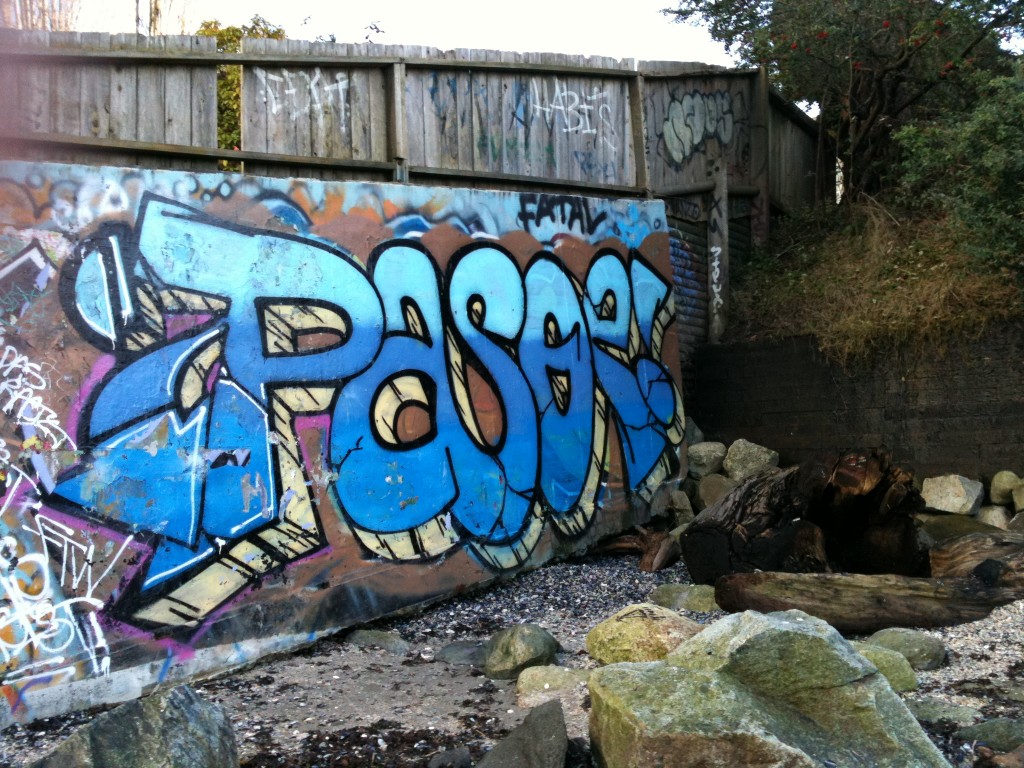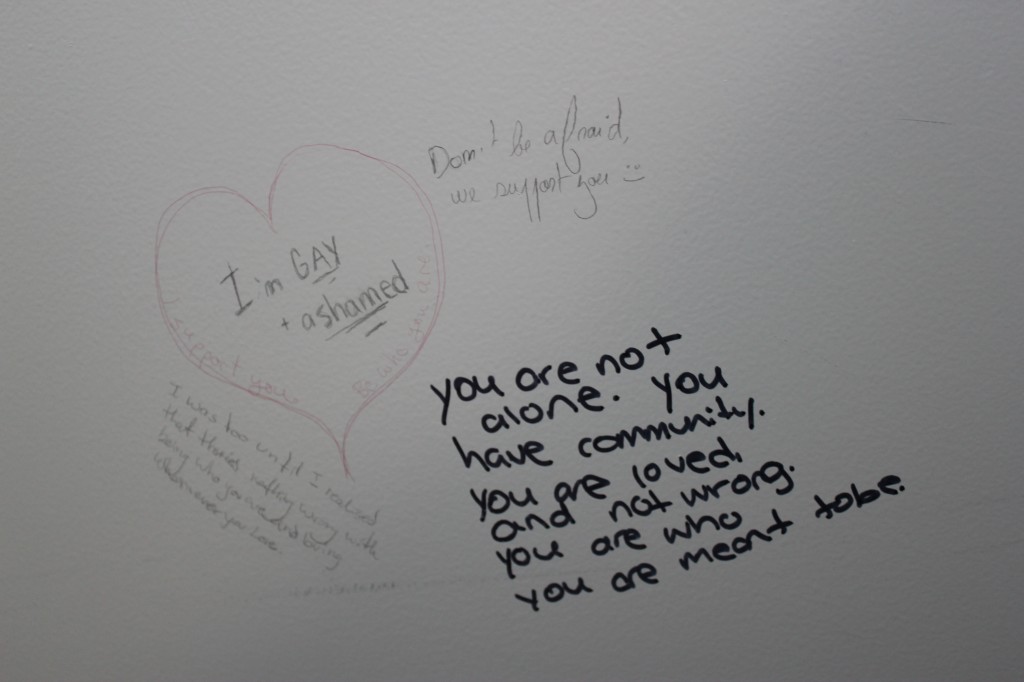
 These two pictures were taken underneath the Granville Bridge on 4th and Anderson Ave. The first one can be classified as typical graffiti, whereas the second one could be viewed as something more respected and classified under art. The second one is also sponsored by the Bill Reid art gallery, leading us to think that it has a more prestigious background. Both are part of a Vancouver community program trying to eliminate unwanted graffiti showing up in Vancouver neighborhoods. It is thought that having legal art displayed on public walls, otherwise known as ‘murals’, deters graffiti artists from tagging or spray painting on top of the mural. “Once art goes up on a wall it’s generally respected by the community. It’s just kind of a street level law where you don’t tag art.” (Darren Trach, Vancouver Mural Competition Video) It is interesting that Vancouver has found this way of helping the artists showcase their talents, while dealing with the graffiti problem in the city. However, with this program there are conditions and limitations. The city states which walls around town can be painted on and what the art can depict. Art featuring logos, advertising, or religious and political statements is not allowed. So although this program aims to address issues with graffiti artists and the architecture of the city, it seems that what is considered ‘art’ is still being classified and defined by the government.
These two pictures were taken underneath the Granville Bridge on 4th and Anderson Ave. The first one can be classified as typical graffiti, whereas the second one could be viewed as something more respected and classified under art. The second one is also sponsored by the Bill Reid art gallery, leading us to think that it has a more prestigious background. Both are part of a Vancouver community program trying to eliminate unwanted graffiti showing up in Vancouver neighborhoods. It is thought that having legal art displayed on public walls, otherwise known as ‘murals’, deters graffiti artists from tagging or spray painting on top of the mural. “Once art goes up on a wall it’s generally respected by the community. It’s just kind of a street level law where you don’t tag art.” (Darren Trach, Vancouver Mural Competition Video) It is interesting that Vancouver has found this way of helping the artists showcase their talents, while dealing with the graffiti problem in the city. However, with this program there are conditions and limitations. The city states which walls around town can be painted on and what the art can depict. Art featuring logos, advertising, or religious and political statements is not allowed. So although this program aims to address issues with graffiti artists and the architecture of the city, it seems that what is considered ‘art’ is still being classified and defined by the government.
By Jennika Efford
GVTV.ca
N.D. Graffiti Mural Competition. City of Vancouver. http://vancouver.ca/Greaterdot/video/05-GraffitiMuralComp.wmv/, accessed on February 6, 2012.





